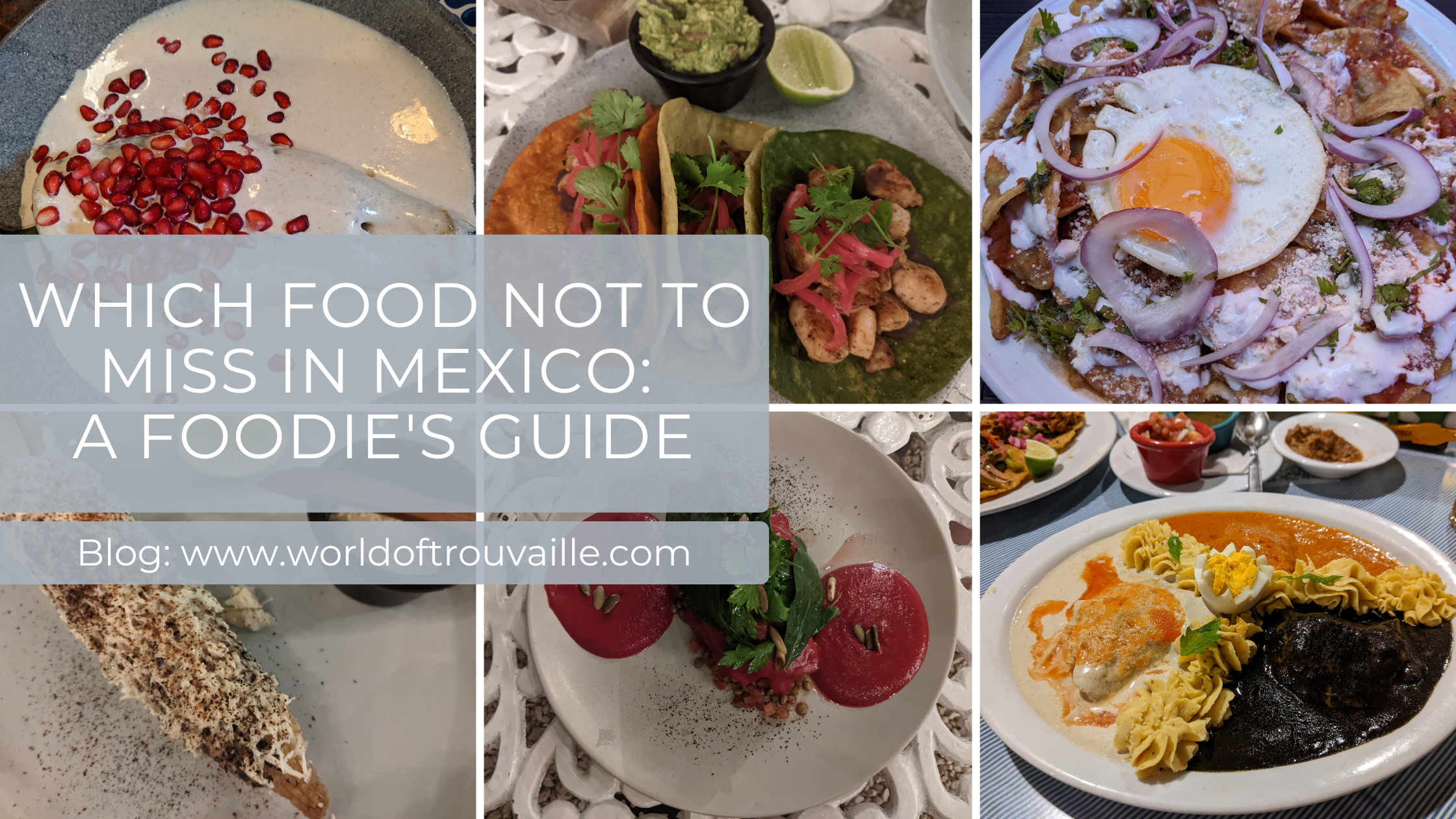
Which Food not to miss in Mexico
Mexican cuisine is widely known for its delicious and unique flavors. The combination of fresh ingredients, spices, and cooking techniques has resulted in a cuisine that is not only tasty but also incredibly diverse. From the tangy and spicy flavors of tacos al pastor to the smoky and savory taste of mole poblano, Mexican cuisine has something to offer for everyone.
Everyone who travels to Mexico should taste the food because Mexican cuisine is incredibly diverse, flavorful, and unique.
I am constantly smiling while collecting this list of food and drinks, which we had on our Mexico trip and I must confess, that I am about to book a flight – just to get this awesome food again.
Find following a food guide for Mexico and some dishes, which you should not miss!
TABLE OF CONTENT
Chilaquiles: Chilaquiles is a savory breakfast dish made with tortilla chips, fresh avocados, and tangy salsa verde, all topped with a perfectly fried egg. Although it may sound like a snack to munch on at the movies, it is a delicious and satisfying meal that I highly recommend trying at least once. Additionally, this dish can be made vegetarian-friendly by ordering it without the chicken.

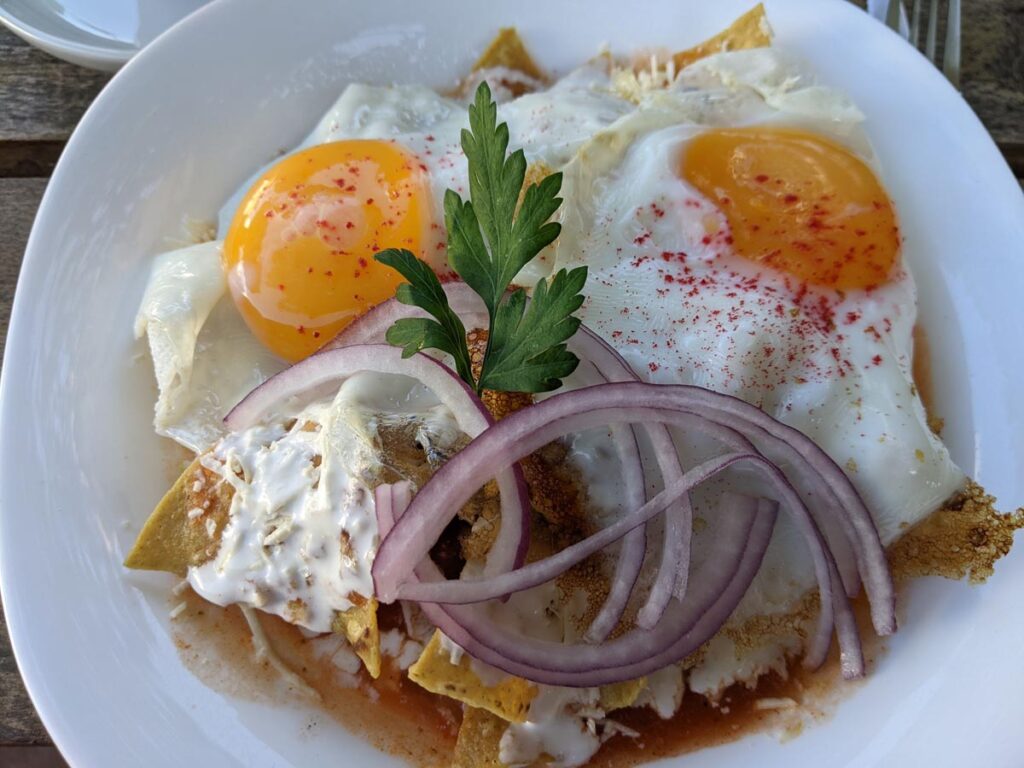
Ceviche: Ceviche is a dish with Peruvian origins, but it can also be found in Mexico and Yucatan. It consists of fish or seafood that is marinated in a brew called “Leche de Tigre,” made from lemons, salt, and chili. The citric acid in the brew “cooks” the fish. Raw onions and cilantro are then mixed with the fish to add flavor. This refreshing and light dish is typically served with sweet potatoes or Cancha corn. If you’re looking for a dish that is bursting with flavor, ceviche is definitely worth a try!
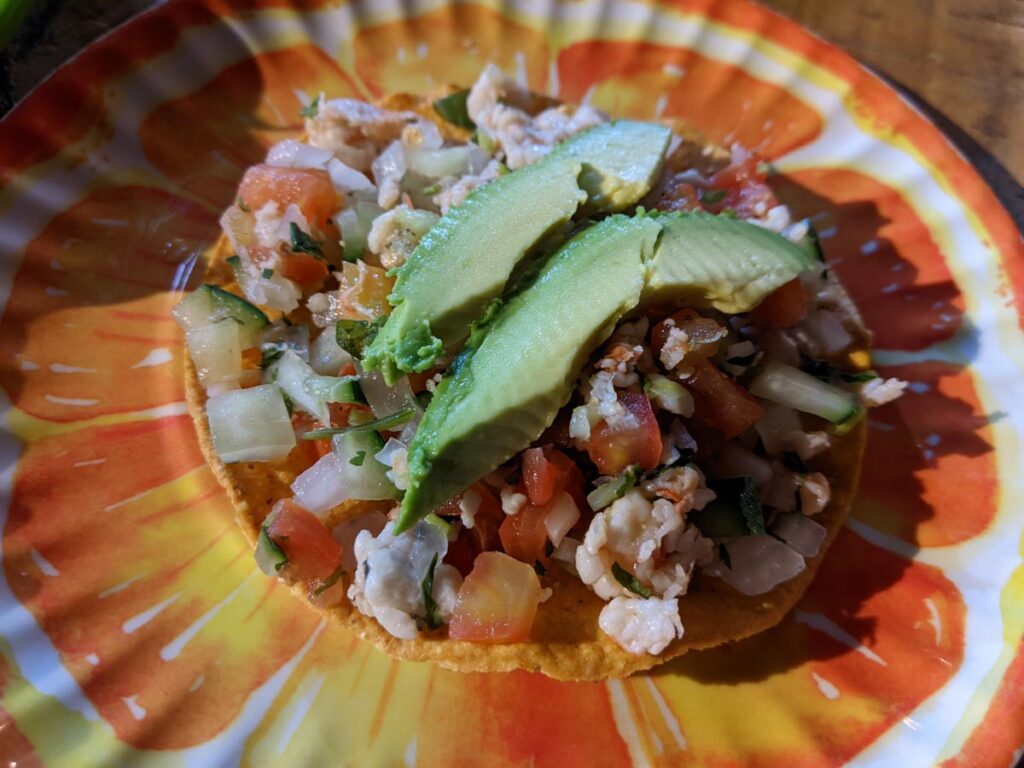
Camarones de Aguachile: Imagine sitting at a shaded beach bar in Holbox, feeling the heat of around 30°C and searching for something light to eat. You want to avoid feeling sluggish and weighed down by heavy food. One excellent option to consider is Camarones de Aguachile. When I traveled through Yucatan, I lived on this dish, as it’s served cold and is fresh and light. As the name suggests, it contains prawns and comes with a hint of spiciness. Similar to ceviche, the prawns are “cooked” by the lemon juice, and the dish is typically served with cucumber, green chili, and sometimes avocado. The dish is best enjoyed with crispy tostadas. Yummy!

Tortas: Don’t let the name fool you; Tortas are not cakes. They are actually huge sandwiches that can be enjoyed any time of day, and in many different variations. The most popular type is the “Torta de Carne Asada” – a grilled steak sandwich. In my opinion, these sandwiches are so generously sized that they can easily feed an entire family.
Tacos al Pastor: Tacos al Pastor are the go-to food in Mexico and an absolute classic of Mexican cuisine. Once you’ve tried them, you’ll never want to go back to Tex-Mex tacos or even visit a Taco Bell (yikes!). These tacos are hearty and fruity, always freshly made, and incredibly cheap. You can find them everywhere on the streets of Mexico, making them a convenient and delicious option for a quick bite.
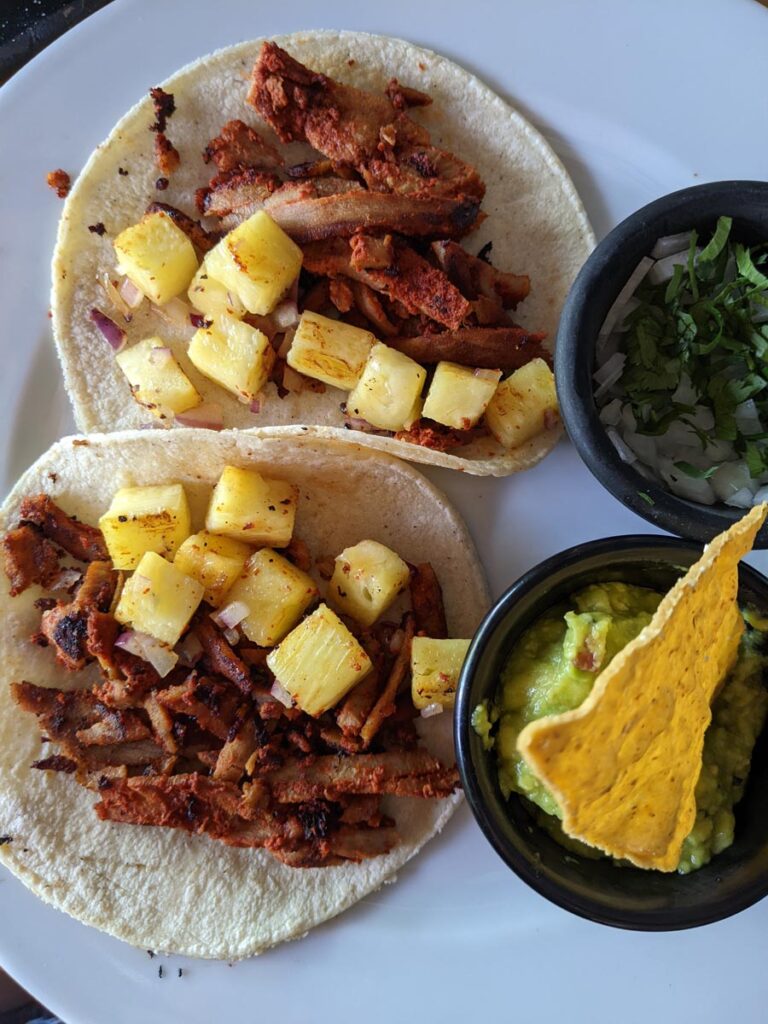
I would even say: If you have not had a Taco al pastor, you have not been to Mexico.
Tacos al Pastor are an iconic food in Mexico and a must-try for anyone visiting the country. These tacos are typically made with marinated pork that is grilled on a skewer, similar to a “Dönerspieß” in Germany. However, what sets Tacos al Pastor apart is that the skewer is often topped with pineapple, which is cut in the same way as the pork and mixed together before being served on a fresh corn tortilla. The tacos are then topped with a little cilantro and fresh red onions, and can be paired with a variety of sauces that are usually provided at the table. Eating them with your hands makes them even more enjoyable and truly finger-licking good!
Variety of Tacos: While Tacos al Pastor are a definite must-try in Mexico, there are so many other varieties of tacos to discover as well. From street food to upscale restaurants, tacos are a cultural staple of Mexican cuisine. Each taco is a unique experience, with new flavor combinations and taste explosions in every bite. With such a diverse range of options, you’re sure to find a taco that will satisfy any craving.
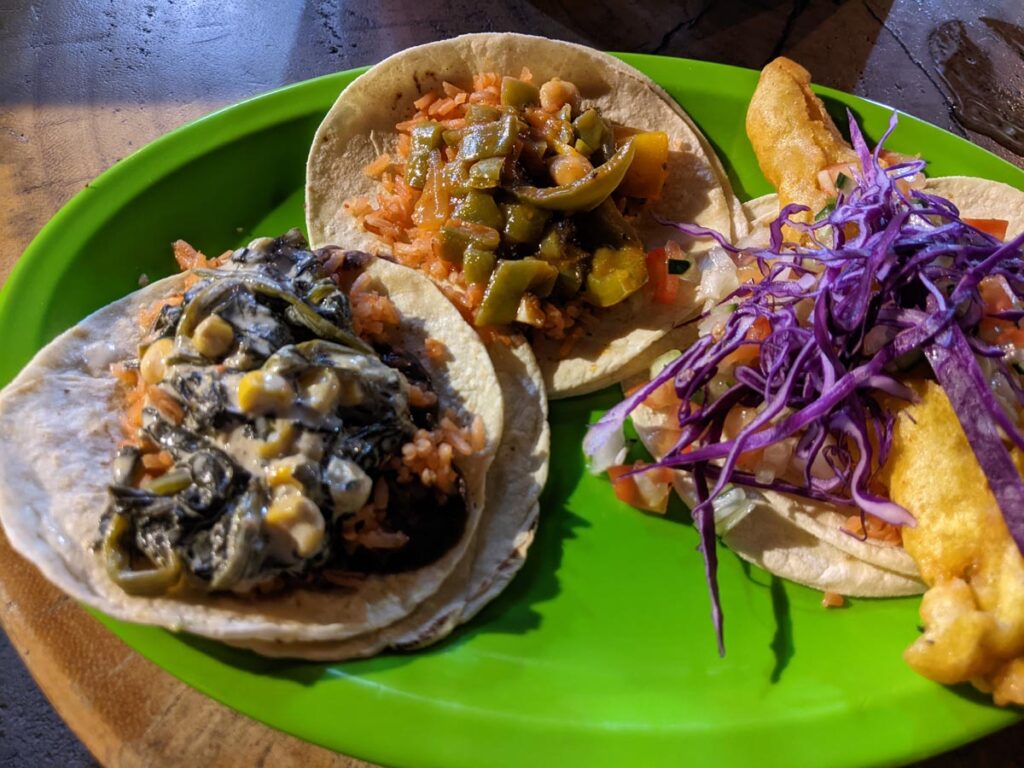
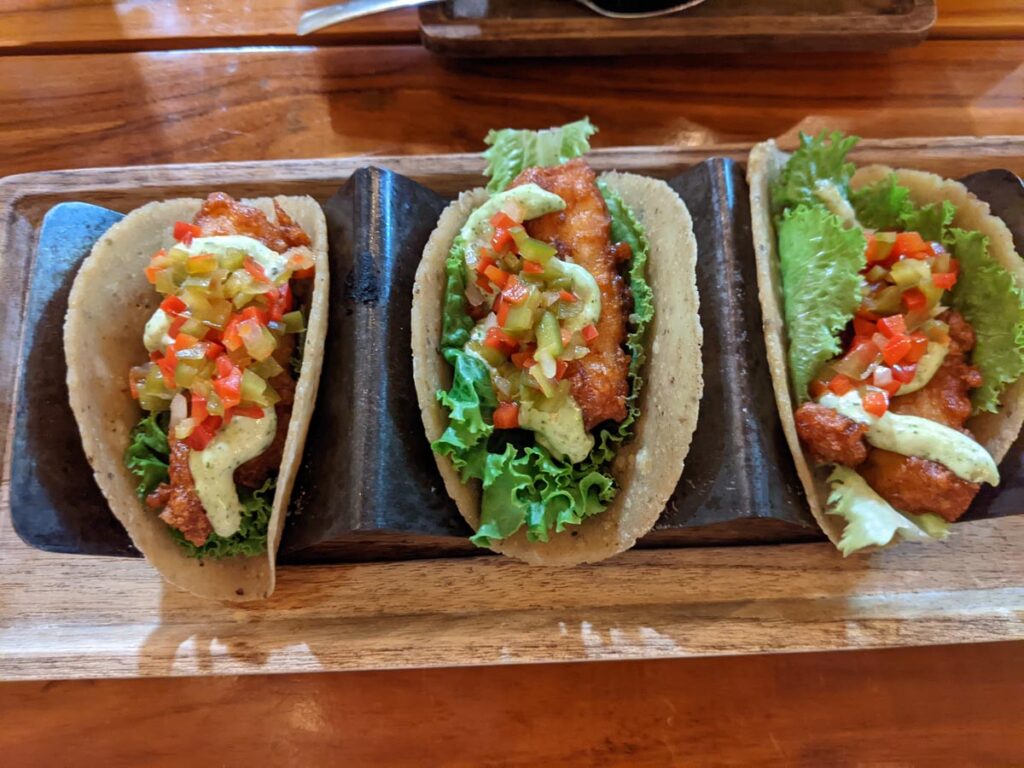
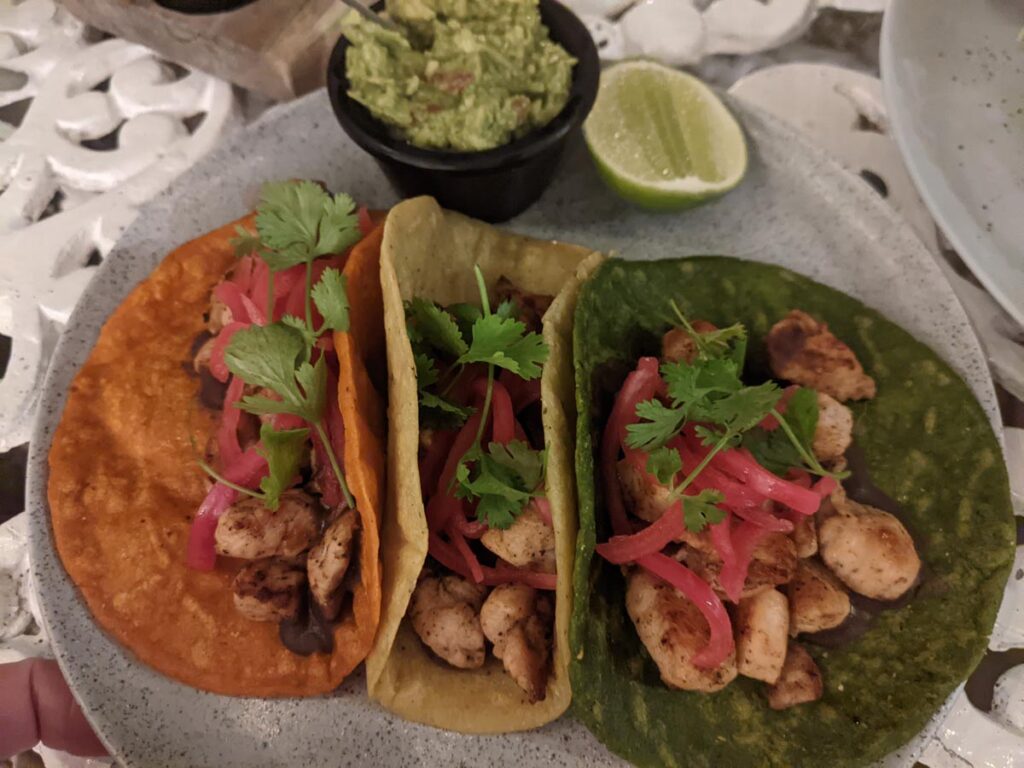
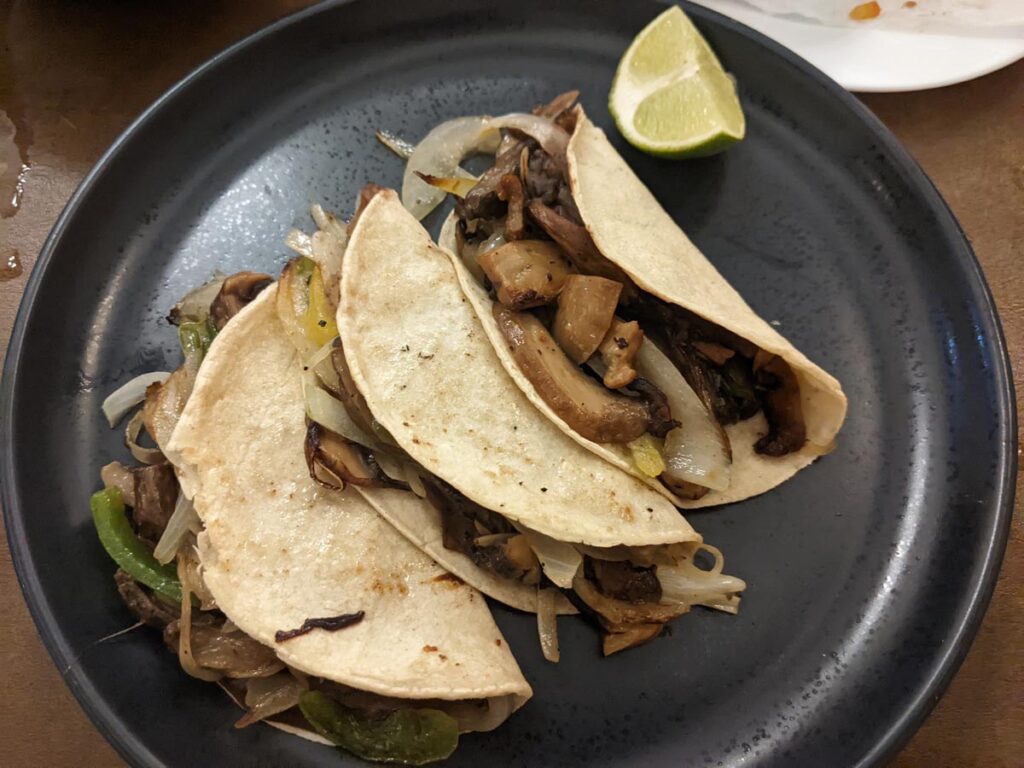
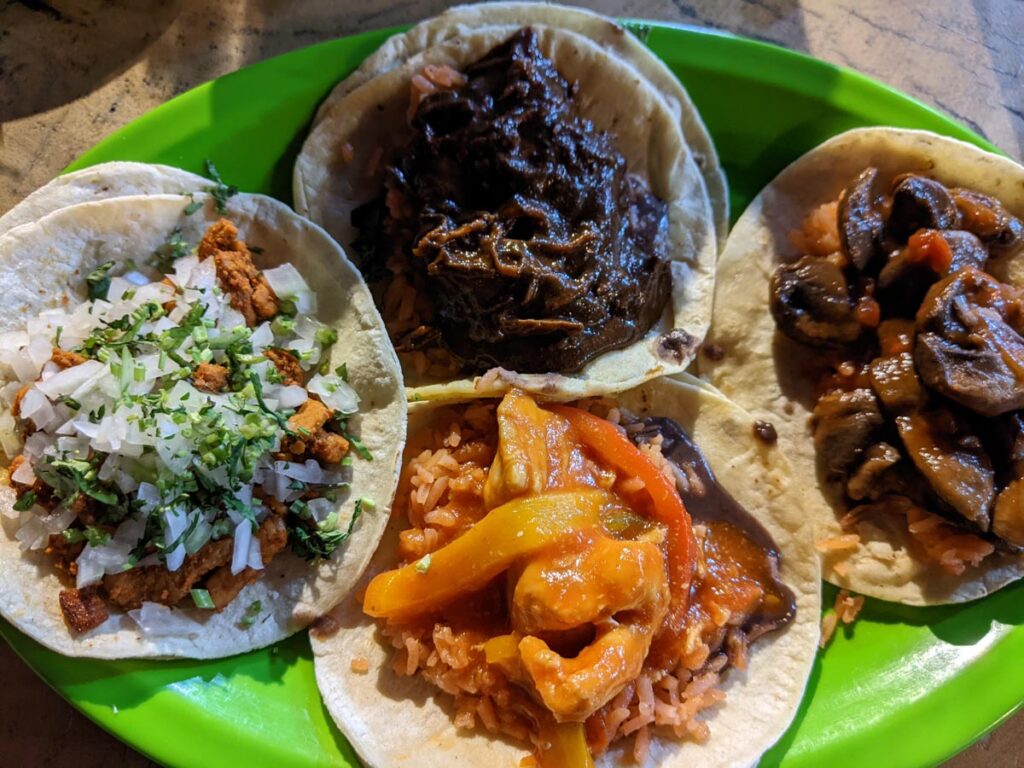
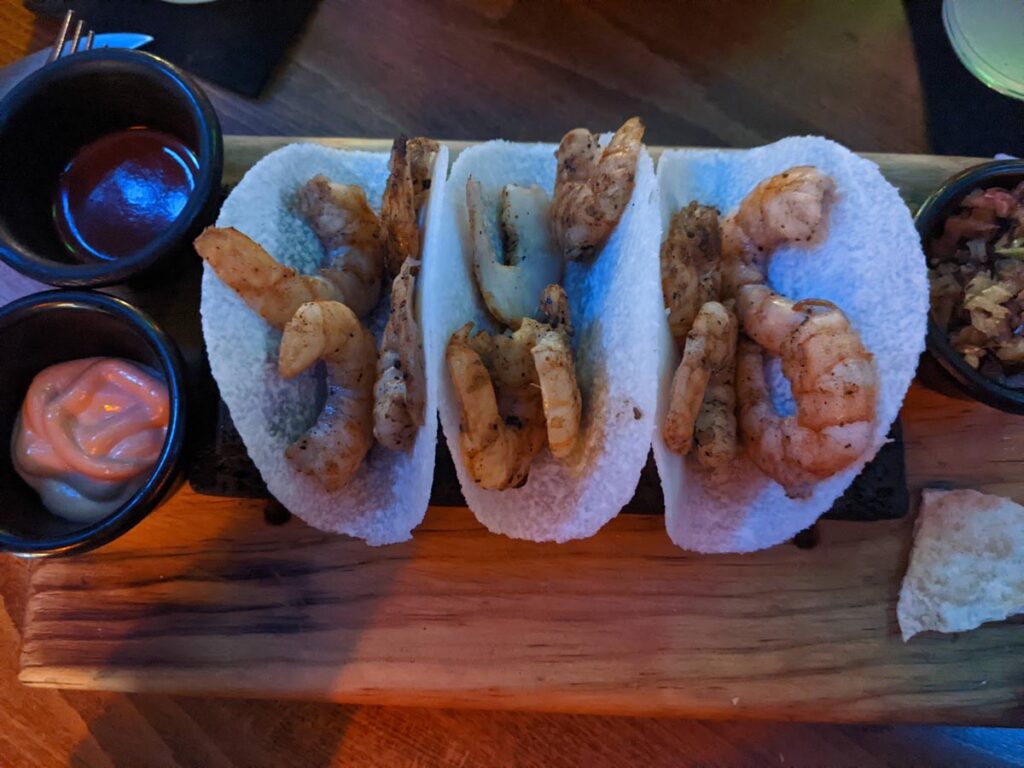
Mole poblano: Mole Poblano is the Mexican national dish and – just as the country itself – quite extraordinary. This is thanked to the combination of ingredients. It is a meat dish, which typically comes with chicken meat. Nothing special so far.
But: the meat is combined with a chili-chocolate sauce. The sauce is made of tomatoes and many different spices such as cinnamon, anise and cloves, which adds a sweet and almost Christmassy taste to it. It is slight spicy and slightly sweet, and it goes so well with the chicken.
This dish is a true must-eat in Mexico – where else will you find such a fancy combination?

Pink Mole (Mole Rosa):
To be honest: When I read this at first, I was sure, that this is just a fancy version of the Mole poblano. But, turned out: Pink Mole is actually a very traditional dish as well and is based in the state of “Guerrero”. The pink hue obtained from rosy hibiscus flower and rose-colored chiles, among other roseate ingredients.
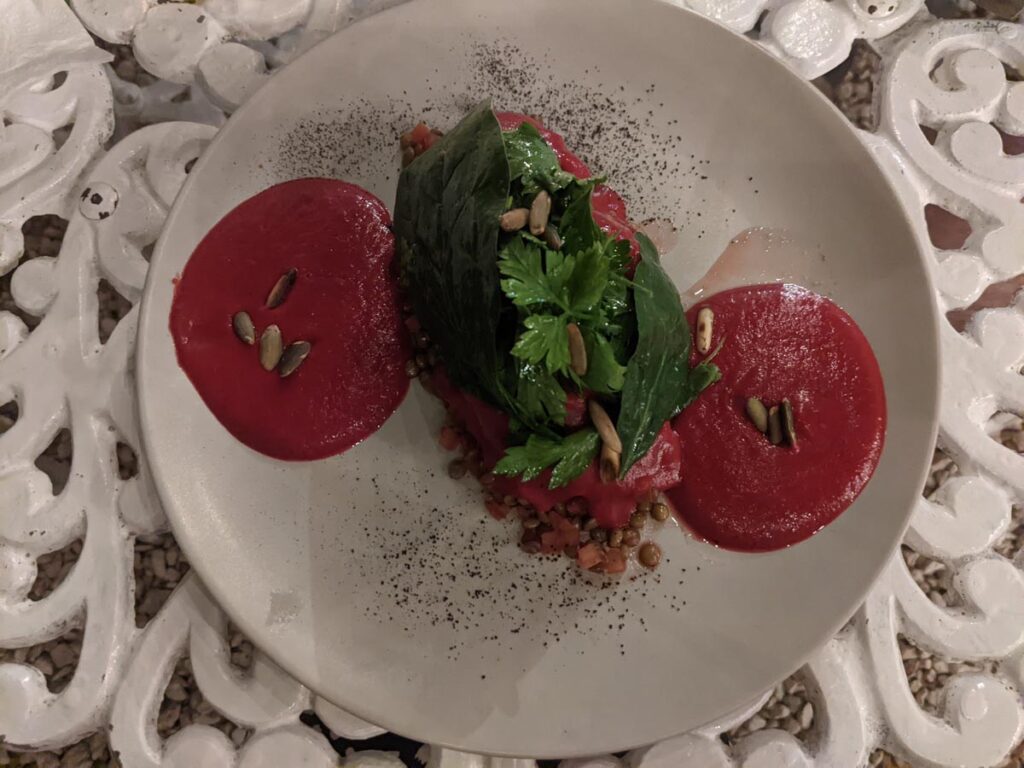

Tamales: Tamales are typical dish all over central America. The origin of this dish goes all the way back to the Maya and the Aztecs and shows once more the importance of corn within the Mexican cuisine. Tamales are plant leaves (usually corn or banana) filled with a mixture of “Masa” – a corn mixture – combined with meat, cheese, or other ingredients. Everything is mixed-up and stuffed into the leaves and gets steamed. A vegetarian alternative is the “Tamal de elote” – A Tamales mainly filled with corn. And there are even sweet versions, so called “Tamal de dulce”.
Chile en Nogada: I fell in love with Chile en Nogada immediately when I first tried it at a food market in Mexico City. The dish features a green chili filled with a mixture of meat, onions, various fruits and vegetables, and spices, then topped with a creamy white cheese sauce, cilantro, and pomegranate seeds.
Although it may not sound fancy, the taste is unparalleled, and even Europeans who have had stuffed peppers before will find it unique.
What sets Chile en Nogada apart is that the green chili, white sauce, and red pomegranate seeds represent the colors of the Mexican flag, making it the most patriotic dish in Mexico.
If you want to try this seasonal dish, plan to visit Mexico in August or September when it’s typically served for the national holiday on September 16th.
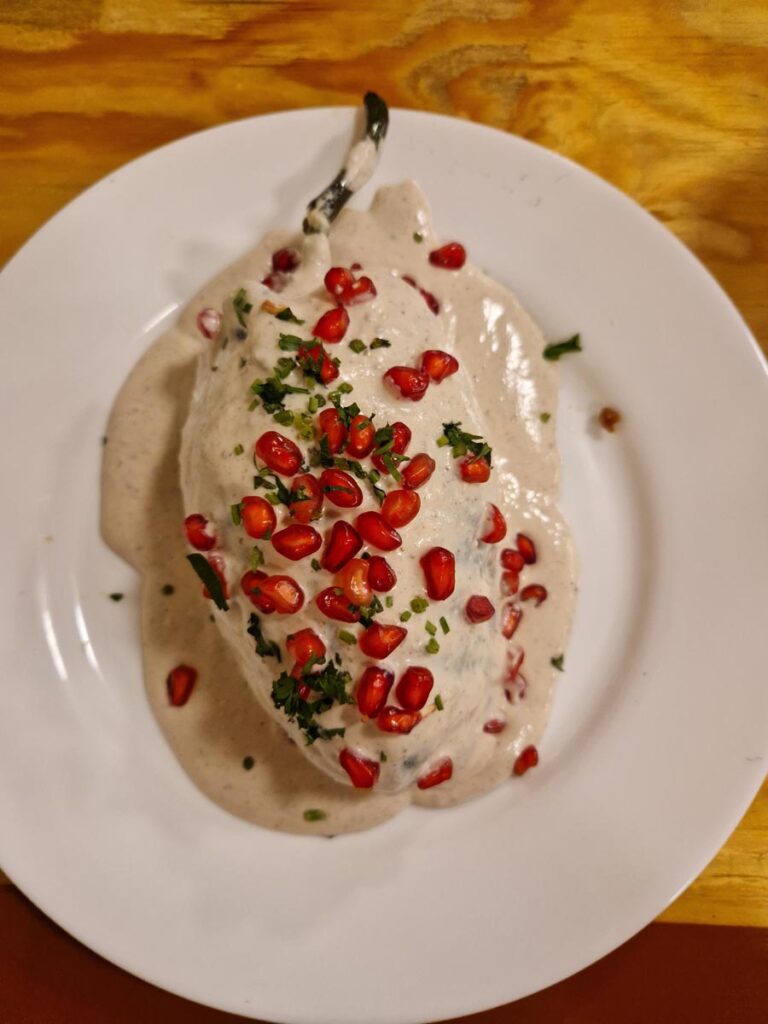
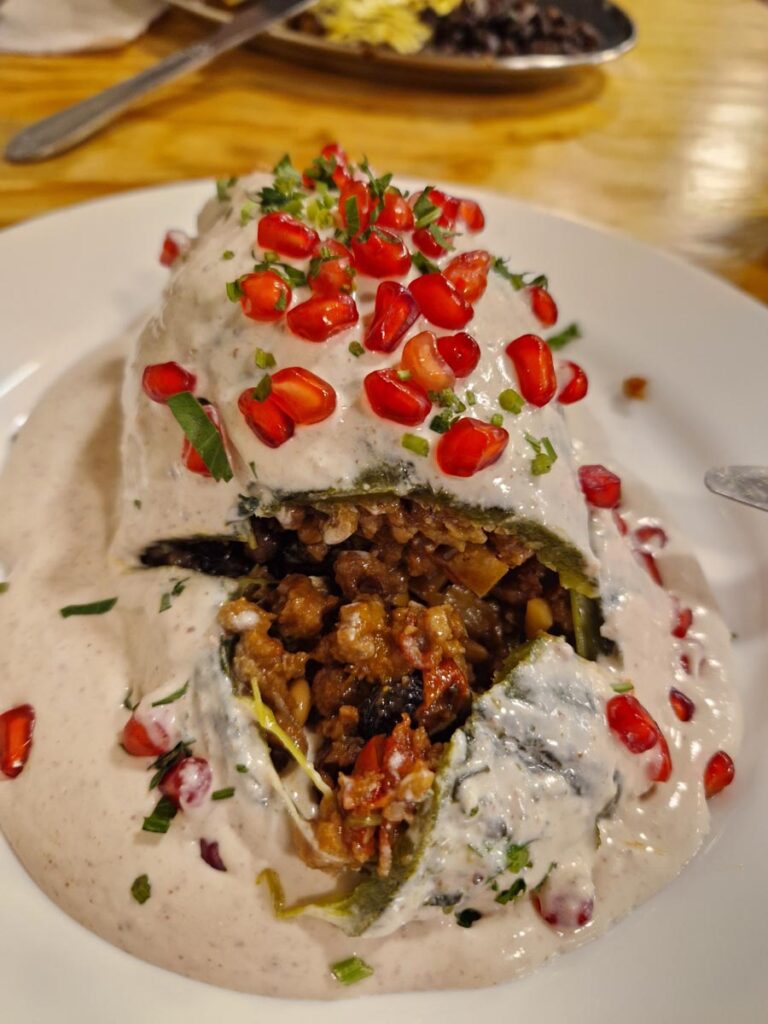
Esquite and Elote: Esquite and Elote are two very popular snacks, which are mainly served from small street food stalls at the roadside. Both snacks mainly contain corn. The biggest difference is that Esquite is usually served in a small bowl and Elote is served as a whole corncob. They both share the same ingredients, such as: corn, cilantro, mayonnaise, lime, cheese and chili powder. If you care about your clothes, it might be more convenient to go for the Esquite. But make sure, to try at least one of them, when in Mexico.
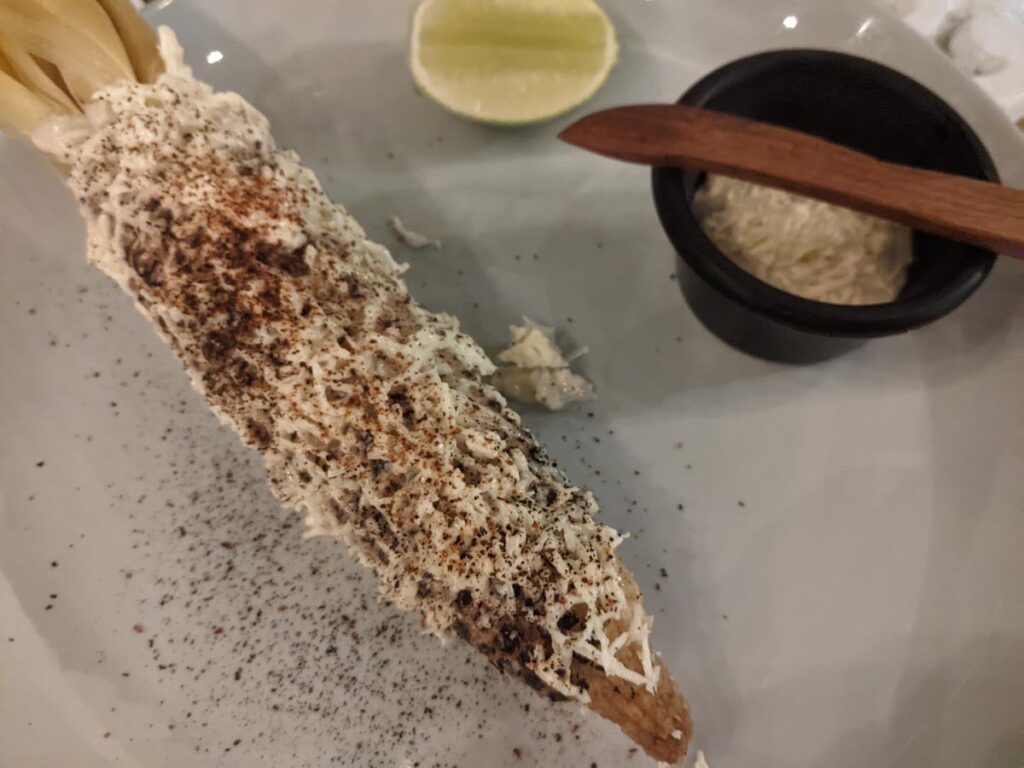
Panuchos: Panuchos are a popular dish from the Yucatan peninsula, consisting of deep-fried corn tortillas stuffed with black beans. The typical Panucho is topped with turkey, cabbage, tomatoes, pink onions, and avocado, though vegetarian options are also available. The crispy, greasy tortillas complement the fresh toppings, creating a satisfying contrast of textures and flavors. You can find Panuchos on almost every menu in the Yucatan, making it a must-try dish for visitors to the region.
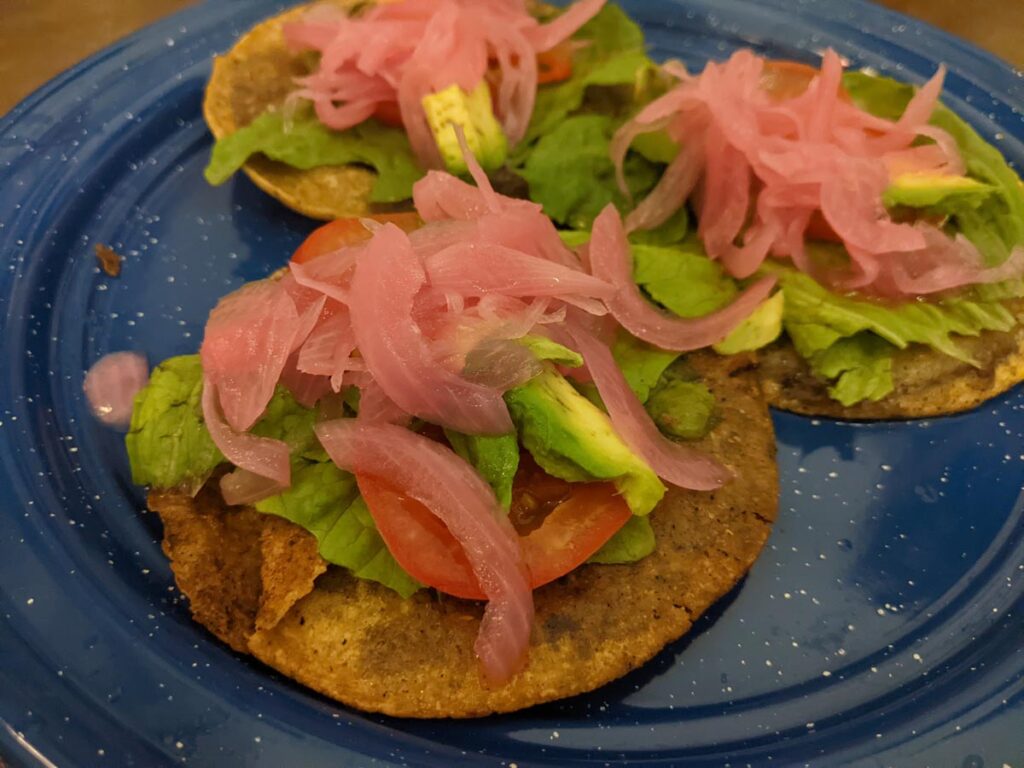
Quesadillas de Machetes de Amparito: If you’re visiting Mexico City, I highly recommend checking out Machetes, a spectacular restaurant that I was fortunate enough to discover with the help of a local friend. The highlight of their menu is their enormous quesadillas, which can reach up to 1 meter in length and are filled with a variety of delicious ingredients. Be prepared for a special experience as you watch the preparation and serving of these massive quesadillas, which require at least two plates. And despite their size, they’re also incredibly tasty! Just be sure to prepare yourself beforehand by skipping dinner the night before, or maybe even all meals of the day!
Taquito/Flautas: Flautas (English: flutes) got their name from their long small appearance – almost like a flute. They are a classical Mexican dish and are often served as entrée. They consist of crispy tortilla dough, rolled and filled with either black beans or chicken. They usually get served with a little bit of fresh salad and cheese.
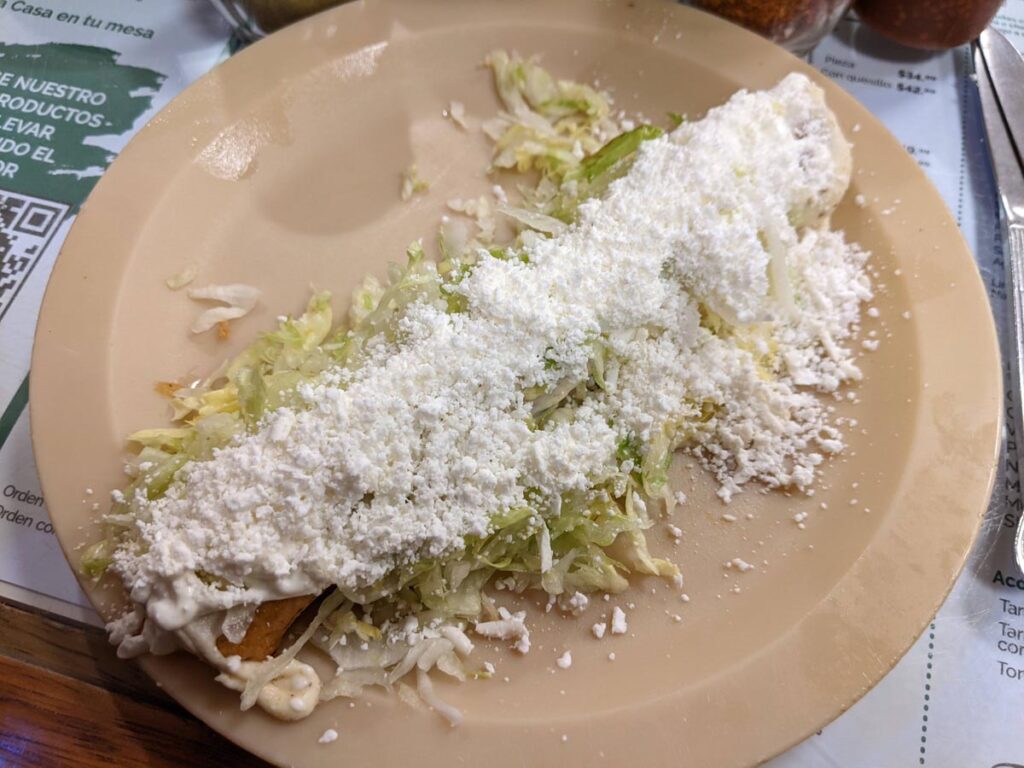
Pozole: Pozole is a delicious and comforting soup made with corn. It comes in different variations such as Red, Green, or White and can be served with chicken, vegetables, or even seafood in some regions, such as the Yucatan area. The soup is typically topped with radish, salad, and a special type of corn called Cacahuazintle. This warm and satisfying dish is not too heavy and perfect for a chilly day.
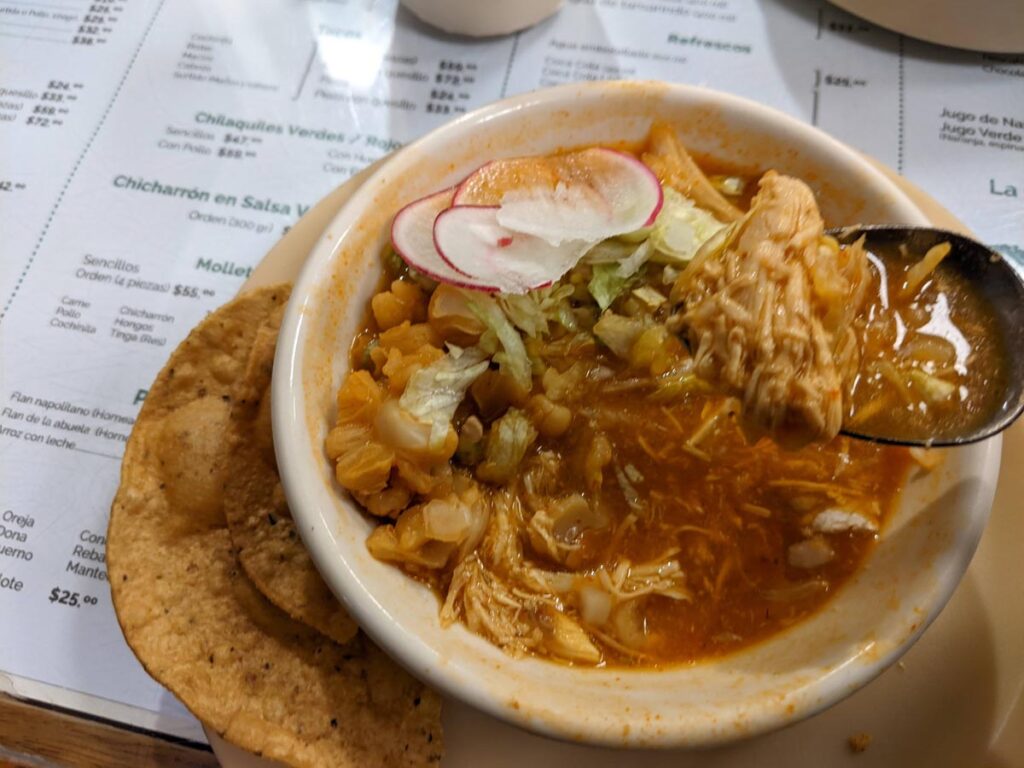
Quesadillas Mexicana: Quesadillas Mexicana is a delicious and easy-to-make snack made from wheat or corn tortillas stuffed with cheese and topped with red and green peppers and cilantro. This dish is a great vegetarian option and can be easily made at home.
Guacamole with Corn Tortilla Chips: A beloved classic of Mexican cuisine, guacamole is a refreshing and delicious dip that is typically served with crispy corn tortilla chips. It’s a staple on almost every menu and sometimes even served as a complimentary starter. Refreshing, crisp and sooo delicious!
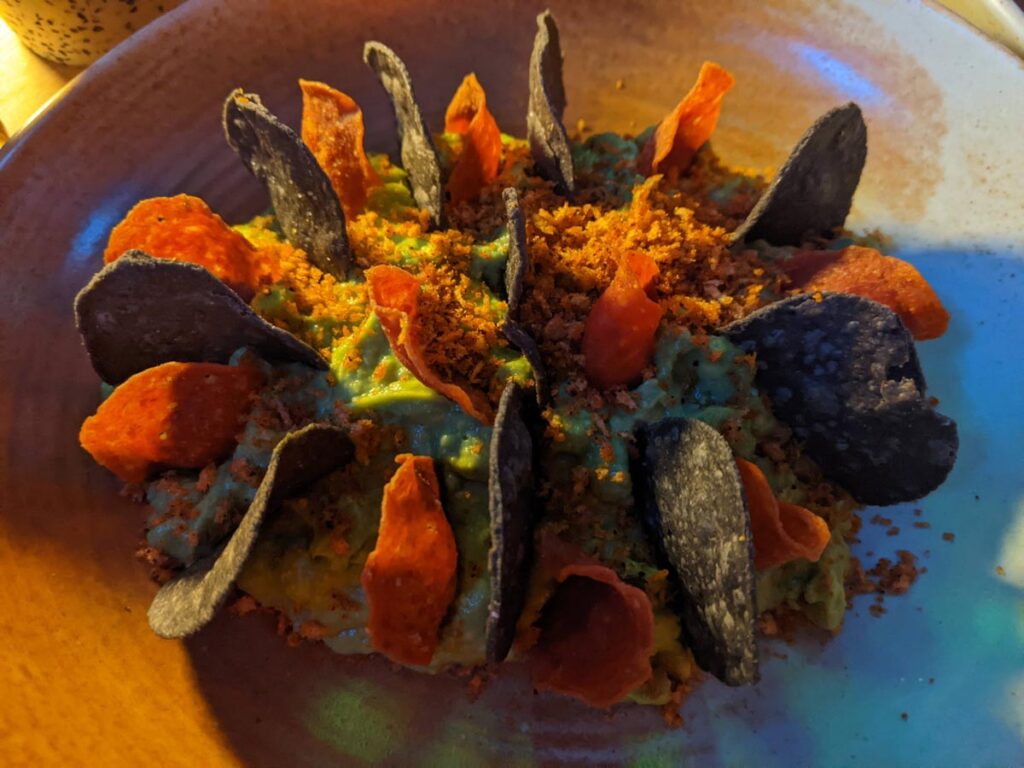
Churros: Churros are a popular dessert or sweet snack in Mexico, just like in Spanish cuisine. These deep-fried treats are covered in a mixture of sugar and cinnamon and are typically served with hot chocolate sauce. However, a more traditional way of enjoying churros in Mexico is by dipping them in condensed milk.
You can also find variances such as a “Churros Sandwich” with ice cream in the middle of two churro “plates”. A greasy, but delicious treat. Best served at “Churreria El Moro” at Mexico City.

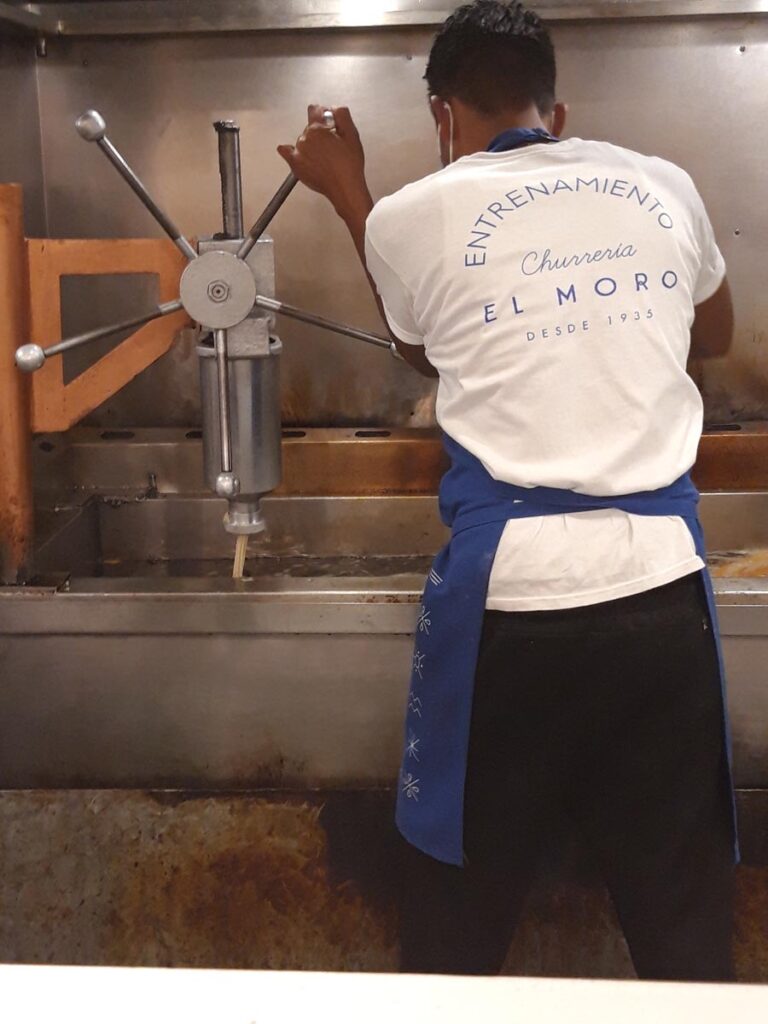
Tamarind Sweets: You can have a lot of discussions about the term “sweet” when it comes to Mexican candy. Unlike the typical sweet treats of Europe, Mexican candy often appears hearty, spicy, and sour. An ingredient frequently used in Mexican sweets is tamarind, which contributes to the sour taste. It may take some getting used to, but after a while (at the latest, after three weeks), you can tolerate the sour taste like a true Mexican. Eventually, I discovered one candy that I really enjoyed: flautirrko candy sticks. These are made with tamarind pulp and spiced with chamoy, a Mexican salsa sauce.
Mazapan de la Rosa: Mazapan de la Rosa is a sweet candy that deserves the name. It’s the Mexican version of “Marzipan” and is made with peanuts instead of almonds, unlike its European counterpart. It’s widely available in supermarkets and has a crumbly texture that’s sure to satisfy your sweet tooth.
Marquesita: I had a hard time deciding on the proper category for this food-heaven-item. But, as I had it as a dessert, so I decided to put it to the category “sweets”.
Marquesita is a delightful dish that originates from Yucatan and can be found mainly in the region of Mérida. This dessert resembles a French crepe, but with a unique crunchy texture that sets it apart. Marquesita can be filled with a variety of ingredients, such as Nutella, cheese, dulce de leche, and even shredded coconut. My personal favorite is the “Cheese and Nutella” version, which offers the perfect balance of sweet and savory flavors. If you have a sweet tooth and are in the area, don’t miss the opportunity to try this heavenly treat!
Wait – Cheese and Nutella? You might ask. And the answer is: Yes (!!!).
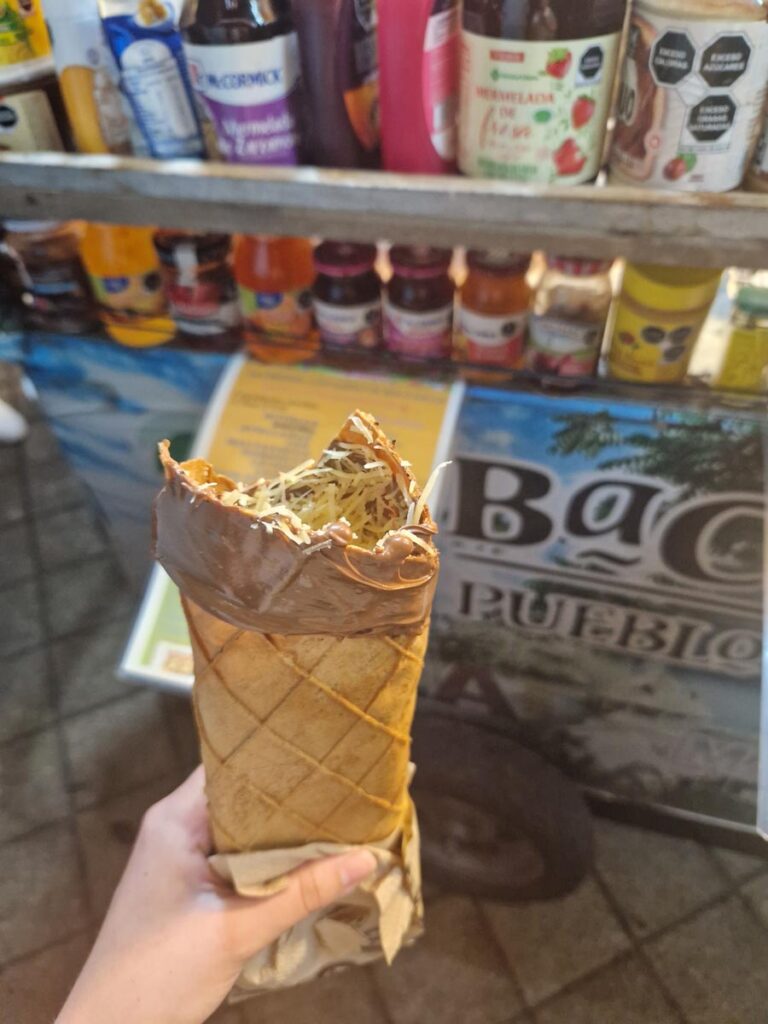
I can’t explain how awesome this is. You just need to try it yourself. As the cheese is not very flavorful itself, it supports the Nutella very well and add a very subtle salty component to it. The experience of the cheese and Nutella melting into each other within the hot and crispy crepe is pure food heaven. (By the way: I am already looking for flights, while I am writing this. Who else?)
Mexican Horchata: Do you know this feeling of heading home after a trip and missing all the good food and drinks you had? Especially, when knowing, that you will not find something similar close to home? I still get this feeling, when thinking of my beloved Horchata. I had this drink everyday several times and especially for breakfast. Horchata is a rice-based drink, which is spiced with vanilla and cinnamon. It almost tastes a little bit like German rice pudding with sugar and cinnamon. A true comfort food which you usually connect with your childhood and lunchtime at your grandparent’s house.
Horchata was the must-have for each meal – breakfast, lunch, dinner – Horchata is always a good idea.
Also, a really good combination: Horchata and Espresso. Love it.
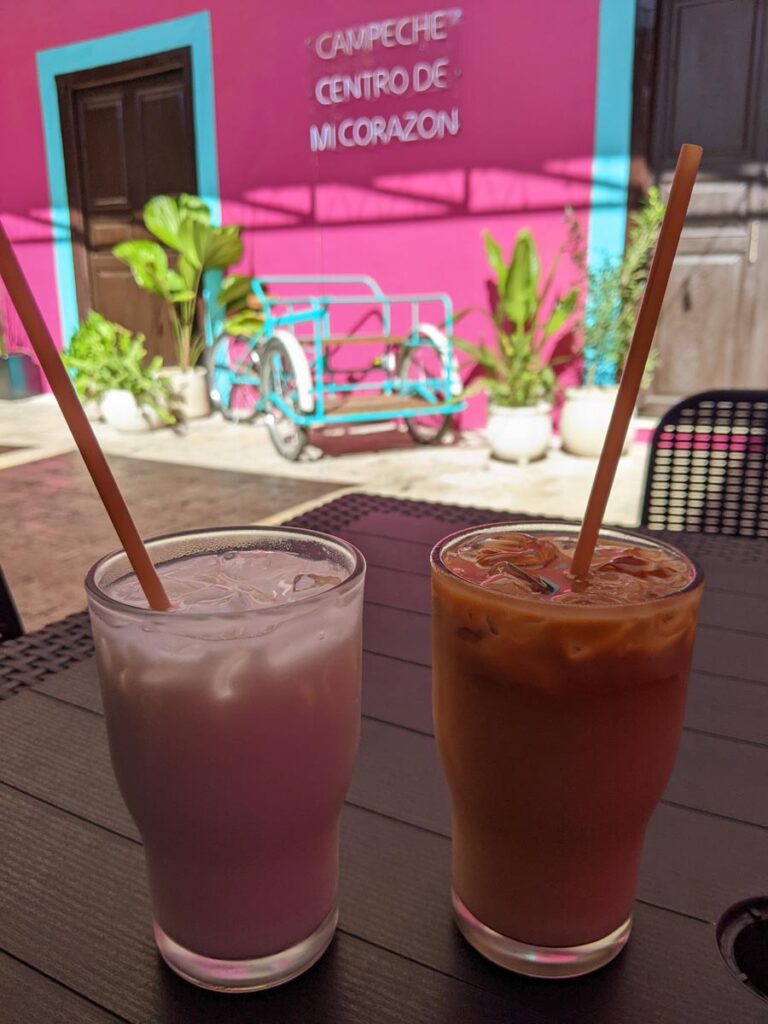
Agua de Jamaica: Agua de Jamaica is a popular drink in Mexico made from hibiscus flowers, which I didn’t even know were edible before traveling there. It’s a delicious and refreshing iced tea. You can even find dried hibiscus flowers in markets, which make for a tasty and visually stunning snack when dried and coated in sugar.
Hot Chocolate: Hot Chocolate in Mexico is different from what you’ll find in Europe. It’s made from roasted and ground cacao nibs with spices like muscat, piment, and cinnamon added to the chocolate. Instead of milk, cacao butter is added to make the chocolate base, giving it a rawer, less sweet and creamy taste compared to European hot chocolate. Despite the difference, it’s a delicious treat that you should definitely try.
Michelada: Michelada is a highly debated drink among European tourists in Mexico, especially for Germans who have a particular expectation of what beer should taste like. Generally, Germans tend to avoid mixing beer with other liquids except for a few exceptions such as lemon soda (Sprite), orange soda (Fanta), or coke. Micheladas, on the other hand, are more of a cocktail than a beer, as they are made by mixing beer with lemon, salt, chili powder, tomato juice, Worcester sauce, chili sauce (Chamoy) and Tabasco.
Yep. I can imagine your reaction reading this. So was mine, when I first saw it.
BUT I must admit: It tastes really good! And it gets even more fancy, if they serve some gummy bears with it (of course covered in ketchup and/or chili sauce).
Chelada: A more simplified version of a Michelada is the Chelada, which can be compared to a Margarita. To make a Chelada, simply cover the rim of a glass with a bit of lemon juice and dip it into salt to create a salty and sour mixture. Then, pour in a Mexican beer, and voila – you have a Chelada! Unlike the Michelada, this version is more refreshing and does not include any chili or unusual sauces. The combination of lime and salt perfectly complements the beer.
Corn, or “maíz” in Spanish, is not just a crop or a food item in Mexico – it is deeply intertwined with the country’s history, identity, and mythology. The indigenous people of Mexico, such as the Aztecs and Maya, revered corn as a sacred plant and believed it was a gift from their gods. Corn played a crucial role in their mythology, creation stories, and rituals. It was also the main staple food of these civilizations, and they developed a variety of techniques and recipes to process and cook corn.
After the Spanish conquest of Mexico in the 16th century, corn remained a vital part of the country’s cuisine and agriculture, but it also became a symbol of resistance and identity for the indigenous populations. The indigenous people were forced to abandon their traditional ways of farming and cooking, but they managed to preserve their corn-based cuisine and adapt it to new ingredients and influences.
Today, corn is still a ubiquitous and versatile ingredient in Mexican cuisine. It is used in a wide range of dishes, from street food snacks like tacos and tamales to complex sauces, stews, and desserts. Corn tortillas, which are made from masa (corn dough), are a staple food and a cultural icon of Mexico. They are used to wrap and accompany many other dishes, and they are also the basis of many Mexican snacks and street foods, such as quesadillas, tostadas, and chilaquiles.
In addition to its culinary importance, corn is also celebrated in Mexican art, literature, and music. It has been depicted in various forms of visual and performing arts, from pre-Hispanic murals and sculptures to contemporary paintings and installations. Corn festivals and ceremonies are still held in many parts of Mexico, where people honor the crop and its cultural significance through rituals, dances, and offerings.

Montezuma’s Revenge, also known as traveler’s diarrhea, is a common issue faced by tourists in Mexico, often due to consuming street food. While there is no guaranteed recipe to avoid it, there are a few guidelines that can help reduce the risk.
One key rule is to consume only peeled fruits and vegetables or cooked meats and fish from street vendors. It is also advisable to choose crowded stalls frequented by locals and avoid empty ones.
To help acclimate your stomach to new foods, start by eating in restaurants before trying street food. Websites like TripAdvisor can provide reviews of restaurants to help you make an informed decision. However, even with these precautions, there is still a chance of getting sick, so it’s recommended to carry medications from your home country in case you do fall ill. Be sure to have a well-stocked travel first-aid kit.